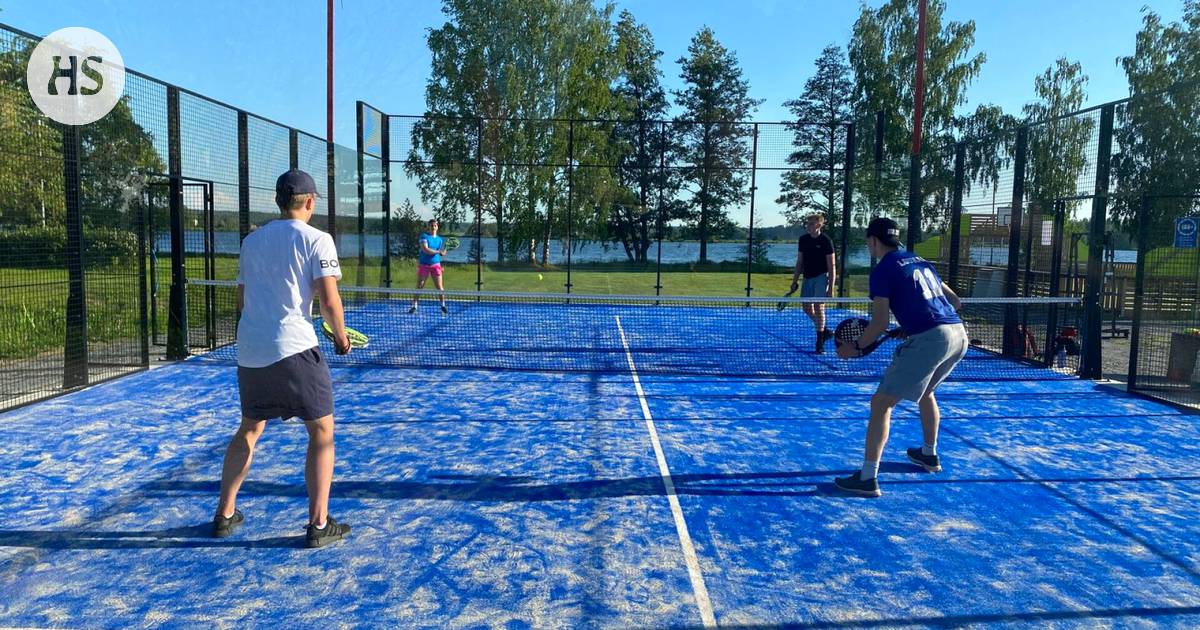The Swedish padel bubble burst and led to numerous bankruptcies. Now in Finland, we are considering whether the recent problems in the industry are due to the same phenomenon.
in Finland During the summer, we read more news about the bankruptcies of padel companies. Many have wondered whether the bubble that has risen around the trendy sport is now finally bursting.
The racket game padel became very popular in Finland during the corona period, and padel courts were built at a daringly fast pace. Many have suspected that not everyone will find customers after the phenomenon calms down.
Now bankruptcies have started to appear.
In Turku, Padelpark oy, which operated indoor facilities in Naantali and Raisio, filed for bankruptcy in mid-June. Around the same time, Padel Turku oy, which ran the Raisio courts of the major player Padel Club Finland, also collapsed in Turku.
At the beginning of July, Padel Sports Oy, the company behind Padel Club Finland, the largest padel operator in Finland, applied for corporate reorganization.
HS made a round of calls to padel industry companies in Finland to find out if we will soon see a similar wave of bankruptcies in Finland as well.
Finn Padel X, a major player in the field, opened its sixth padel center in Pori in March and is opening a new center in Joensuu in September.
CEO of Padel X Iivari Lappalainen is confident about the future of padel.
“We have been doing quite well. In our opinion, the Finnish market is still in a good situation and the sport and the number of players are growing.”
However, Lappalainen recognizes that the competitive situation has tightened. He states that operators who have done things well from the beginning are still doing well now.
From Turku Boost Sports Club started its operations in June. CEO of a sports center with thirteen padel courts Paavo Koivisto states that the operation has started as expected and the plans are unchanged.
“During the summer, we will slowly build up the operation so that we can start the operation in the fall.”
HS Visio told about the beginning of the year about Boost, which is building its sports hall, and the intensified competitive situation of padel companies.
Many companies stated at the time that there was no need to increase the number of fields in only a few areas in Finland. The rise in costs was also seen as making operations difficult.
Koivisto says the company has prepared for the fact that its first summer will be quieter. He also notes that padel courts only take up half of the sports center’s space. Most of the income comes from other services, such as the gym, rental facilities and golf simulators.
Swedish people padel giants bought almost all the biggest padel companies in Finland during the sport’s boom years. The companies that have now run into problems have mainly been the Swedish-owned operators in question.
Padelpark oy, which filed for bankruptcy, was part of the Swedish company PLD United. Padel Sports Oy, which was applied for restructuring, is part of the Swedish-based Ledap Group.
In Sweden, which is slightly ahead of Finland in the padel trend, a wave of bankruptcies has brought down several padel companies this summer. Both PLD United and Ledap have experienced large losses in the Swedish market.
For corporate restructuring Finnish country manager of LeDap, the Swedish company that owns the applied Padel Club Finland Jonna Karjanmaa still believes in padel in Finland.
“The growth of padel in Finland has not stopped. The number of enthusiasts is growing and there are many people who have not yet tried the sport.”
Karjanmaa notes that there are currently strong regional differences in how supply and demand meet.
He sees the tight competitive situation in the Turku region as one of the reasons for Padel Club Raisio’s bankruptcy.
Padel Sports Oy, which applied for corporate restructuring, is the largest player in the field in Finland and runs 19 Padel Club Finland halls across Finland. There are a total of 30 Padel Club Finland centers and the renovation application does not apply to all halls.
Padel Club Finland says in its announcement about the company merger that its business conditions have weakened in some areas due to the oversupply of courts and the rise in the price of energy and rents.
Karjanmaa says that by applying for restructuring, they want to be able to solve these problems.
“The goal is for business to continue in all locations through these negotiations, but it is too early to predict the outcome of the negotiations.”
Others With the companies owned by Ledap, Padel Tampere and Propadel, there has been no need for similar actions, says Karjanmaa. However, the tightened competitive situation is also reflected in their operations.
“The increase in office space costs causes challenges for all operators in the market. There are many differences in the profitability of individual halls. There are also many regional differences.”
Ledap is also a significant factor on the Swedish padel court and has suffered its share of bankruptcies of the country’s padel companies.
Karjanmaa says that the growth rate in Finland has been much more considered than in Sweden.
“In Sweden, the pace was really fast during the corona virus, and in retrospect, maybe too fast. Now that the fields have been closed, the market has recovered.”
Multi of the operators emphasized that the number of enthusiasts continues to grow. HS called Padelliito’s executive director Visa for Korhonen and asked if the argument had any merit.
Korhonen states that they do not have accurate researched statistics, but they are trying to map the number of fans by combining statistics from the reservation systems used by court companies and information from padel clubs.
Korhonen says that according to their statistics, the number of enthusiasts is increasing. Padelliitto estimates that around 95,000–100,000 active padel enthusiasts play on Finnish courts. The number of player licenses has increased this year from 1,990 licenses to approximately 3,400 licenses.
However, the growth rate of the fields has been faster than the growth of the number of enthusiasts.
“Yes, it has been clearly visible in this growth that in some localities fields will be closed, when operators have built fields without knowing each other and large companies operate in the same area.”
According to Korhonen, padel differs from similar trendy sports of its time – such as floor bandy, which is already established as part of the Finnish sports world – in that the courts are built with an entrepreneurial focus instead of municipal sports facilities.
“Due to the current world situation and increased costs, it can explain the ongoing examination of the necessity of the number of fields and the regrettable bankruptcies seen now,” he says.
Call round based on this, it seems that the enthusiasm for building padel courts went into overdrive in Finland as well, although it did not quite reach the proportions of Sweden.
The question of how the increased cost of living is reflected in consumers’ desire to use padel courts when the fall season starts again came up.
It seems that there is still confidence in the vitality of the sport itself in the field. However, many of the respondents anticipate that there will probably be even more bankruptcies in areas where there is an oversupply of pitches.
#Padel #padel #bubble #burst #companies #field #sport #bankruptcies




/s3/static.nrc.nl/images/gn4/stripped/data114857203-c35b19.jpg)




